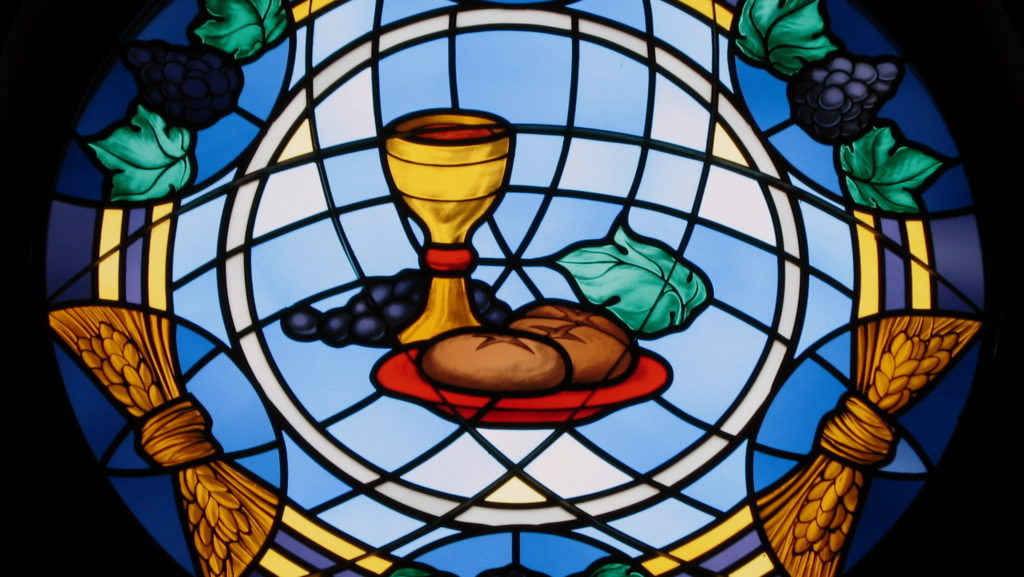It’s time, in these United States, for our yearly day of Thanksgiving.
It’s one of those legacy holidays that strongly implies that there is a God, and that he blesses us, and that he should be thanked.
Our pilgrim ancestors had no doubt about the matter, and they established a feast for our reminder.
But really it’s basic Christianity, and it’s Someone far more authoritative who established a meal to express our thanksgiving.
St. Paul opens his First Letter to the Thessalonians by assuring his hearers, “We give thanks to God always for all of you, remembering you in our prayers, unceasingly” (1 Thessalonians 1:2). The verb he uses for “give thanks” is eucharistoumen.
Similarly, the First Letter to Timothy prescribes the offering of eucharistias, which is often translated as “thanksgiving.” This usage certainly evokes Jesus’ thanksgivings whenever he broke bread. The Gospels present him consistently “giving thanks,” and to this end they use forms of the verb eucharisto. See Matthew 15:36, Mark 14:23, Luke 22:17, and John 6:11 and 23.
In Jesus’ own milieu, these terms of “thanksgiving” could refer not only to generic categories of prayer, but also to a specific form of sacrifice. In the sacrificial system of the Jerusalem Temple, perhaps the most common ritual was the todah, a sacrifice of bread and wine offered in thanksgiving to the Lord. Jews in the Greek-speaking world sometimes translated todah as eucharistia. That’s how the word is rendered in the translation of Hebrew Scripture by Aquila, a second-century convert to Judaism.
To first- and second-century readers, the terms todah and eucharistia would suggest something more than polite expressions of gratitude. They had important sacrificial connotations for both Jews and Christians. More than a century after the fall of the Temple, the Talmud records the rabbinic belief that in the age of the Messiah “all sacrifices will cease except the todah sacrifice. This will never cease in all eternity.”
Did St. Paul intend his “eucharistic” terms to be read with a sacrificial sense? We cannot know for sure, but we should be open to the possibility. Recent research has made academic readers more sensitive to liturgical forms embedded in the epistles.
To first-century authors and their audiences, such forms would have been incomprehensible apart from some sense of sacrifice. Sacrifice was at the heart of biblical religion.
And it remains there. Every Mass is an expression of thanksgiving. Our Eucharistic Prayers make it clear from the beginning: “It is truly right and just, our duty and salvation, always and everywhere to give you thanks, Father most holy, through your beloved Son, Jesus Christ, your Word through whom you made all things …”
Every Mass is an expression of thanksgiving — and the holiday is most complete when we celebrate it with Mass. Make time for it this year, and bring as much of the family as you can!

